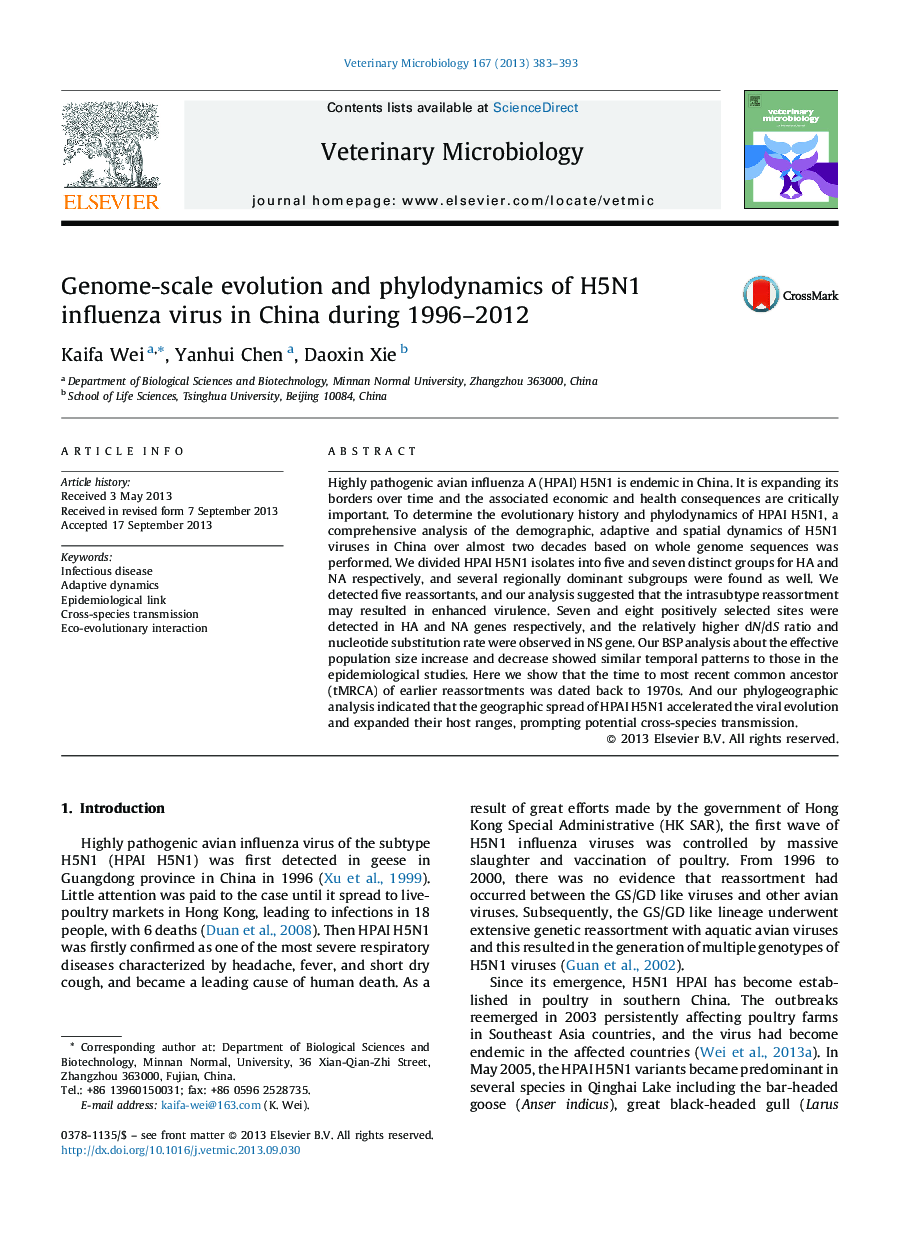| Article ID | Journal | Published Year | Pages | File Type |
|---|---|---|---|---|
| 5800946 | Veterinary Microbiology | 2013 | 11 Pages |
Highly pathogenic avian influenza A (HPAI) H5N1 is endemic in China. It is expanding its borders over time and the associated economic and health consequences are critically important. To determine the evolutionary history and phylodynamics of HPAI H5N1, a comprehensive analysis of the demographic, adaptive and spatial dynamics of H5N1 viruses in China over almost two decades based on whole genome sequences was performed. We divided HPAI H5N1 isolates into five and seven distinct groups for HA and NA respectively, and several regionally dominant subgroups were found as well. We detected five reassortants, and our analysis suggested that the intrasubtype reassortment may resulted in enhanced virulence. Seven and eight positively selected sites were detected in HA and NA genes respectively, and the relatively higher dN/dS ratio and nucleotide substitution rate were observed in NS gene. Our BSP analysis about the effective population size increase and decrease showed similar temporal patterns to those in the epidemiological studies. Here we show that the time to most recent common ancestor (tMRCA) of earlier reassortments was dated back to 1970s. And our phylogeographic analysis indicated that the geographic spread of HPAI H5N1 accelerated the viral evolution and expanded their host ranges, prompting potential cross-species transmission.
